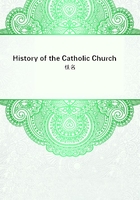
第273章
St. Leger was recalled, and Sir James Crofts, who had been sent on a special commission to Ireland a few months earlier, was appointed Deputy in his place (April 1551). His instructions in regard to the Book of Common Prayer and the inventory of the confiscated church plate were couched in terms similar to those given to his predecessor.[86] Anxious from the beginning to conciliate Primate Dowdall, he forwarded to him a respectful letter (June 1551) calling his attention to the respect paid by Christ Himself and St. Peter to the imperial authority, offering his services as mediator between the Primate and his opponents, Browne and Staples, and warning him of the likelihood of much more serious changes, which he (the Deputy) pledged himself if possible to resist.[87] To this communication the Primate sent an immediate reply, in which he offered to meet his opponents in conference, though he could hold out no hope of agreement, as their "judgments, opinions, and consciences were different."[88]
The conference took place at St. Mary's Abbey in the presence of the Deputy. The Archbishop of Dublin, Staples of Meath, and Thomas Lancaster, who had been intruded into the See of Kildare by royal authority, attended to defend the new teaching against the Primate.
The subjects discussed were the Mass and the Blessed Virgin. Staples took the leading part on the side of the Reformers, and, as Dowdall had anticipated, no agreement could be arrived at. The Primate appealed to the terms of the oath of loyalty to the Pope taken by both himself and his opponents at their consecration, but Staples had no difficulty in proclaiming that he refused to consider himself bound by this oath. The meeting broke up without any result.[89] Dowdall, having forwarded a declaration to the Lord Chancellor that he could never be bishop where the Holy Mass was abolished, fled from Ireland.
Browne wrote immediately to the Earl of Warwick beseeching him to confer on Dublin all the primatial rights enjoyed hitherto by Armagh, while the Deputy sought for instructions about the vacant See of Armagh (Nov. 1551).[90] Dowdall was deprived of his diocese, and the Primacy was transferred to Dublin (1551).
Still Crofts was forced to admit that the Reformation was making but little progress in Ireland. The bishops and clergy gave him no support, and in spite of all he could do "the old ceremonies" were continued. He besought his friends in England to send over reliable men from England to fill the vacant bishoprics and to set forth the "king's proceeding," or if they could not do that, to send some learned men to remain with him by whose counsel he might better direct "the blind and obstinate bishops." The Sees of Armagh, Cashel, and Ossory were then vacant, and, as the Deputy pointed out, it was of vital importance to the Reformers that reliable priests should be appointed. Cranmer nominated four clerics for the See of Armagh, from whom the king selected Richard Turner, a vicar in Kent. But he declined the honour, preferring to run the risk of being hanged by rebels than to go to Armagh, where he should be obliged to "preach to the walls and the stalls, for the people understand no English."Cranmer tried to re-assure him by reminding him "that if he wilt take the pains to learn the Irish tongue (which with diligence he may do in a year or two) then both his doctrine shall be more acceptable not only unto his diocese, but also throughout all Ireland."Notwithstanding this glorious prospect Turner remained obdurate in his refusal, and at last Armagh was offered to and accepted by one Hugh Goodacre.[91] Cashel was, apparently, considered still more hopeless, and as nobody upon whom the government could rely was willing to take the risk, the See was left vacant during the remainder of Edward VI.'s reign. Though Crofts was strongly in favour of the new religion, he had the temerity to suggest that Thomas Leverous, the tutor and former protector of the young heir of Kildare, should be appointed to Cashel or Ossory. "For learning, discretion, and good living," he wrote, "he is the meekest man in this realm, and best able to preach both in the English and the Irish tongue. I heard him preach such a sermon as in my simple opinion, I heard not in many years."[92]
But as Leverous was well known to be not only a Geraldine but also a strong Papist the Deputy's recommendation was set at nought, and the See of Ossory was conferred on John Bale. The latter was an ex-Carmelite friar, who, according to himself, was won from the ignorance and blindness of papistry by a temporal lord, although according to others, "his wife Dorothy had as great a hand in that happy work as the Lord." On account of his violent and seditious sermons he was thrown into prison, from which he was released by Cromwell, with whom he gained great favour by his scurrilous and abusive plays directed against the doctrines and practices of the Church. On the fall of his patron in 1540 Bale found it necessary to escape with his wife and children to Germany, whence he returned to England after the death of Henry VIII. He was a man of considerable ability, "with little regard for truth if he could but increase the enemies of Popery," and so coarse and vulgar in his language and ideas that his works have been justly described by one whose Protestantism cannot be questioned as a "dunghill."[93]